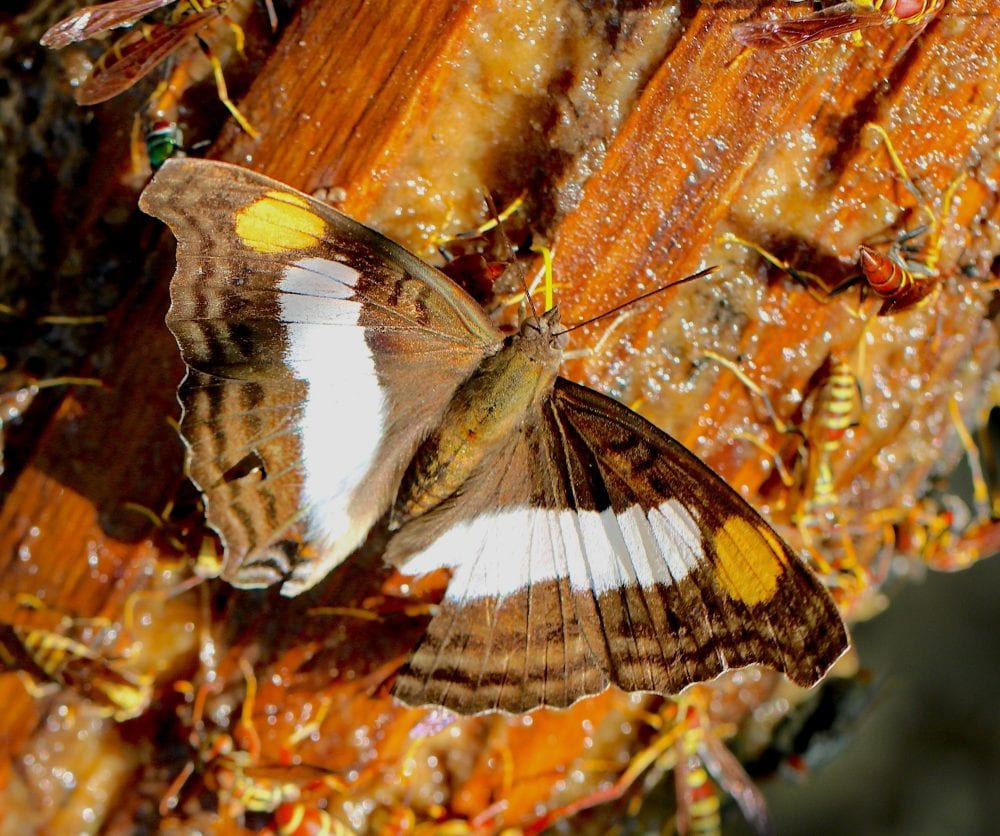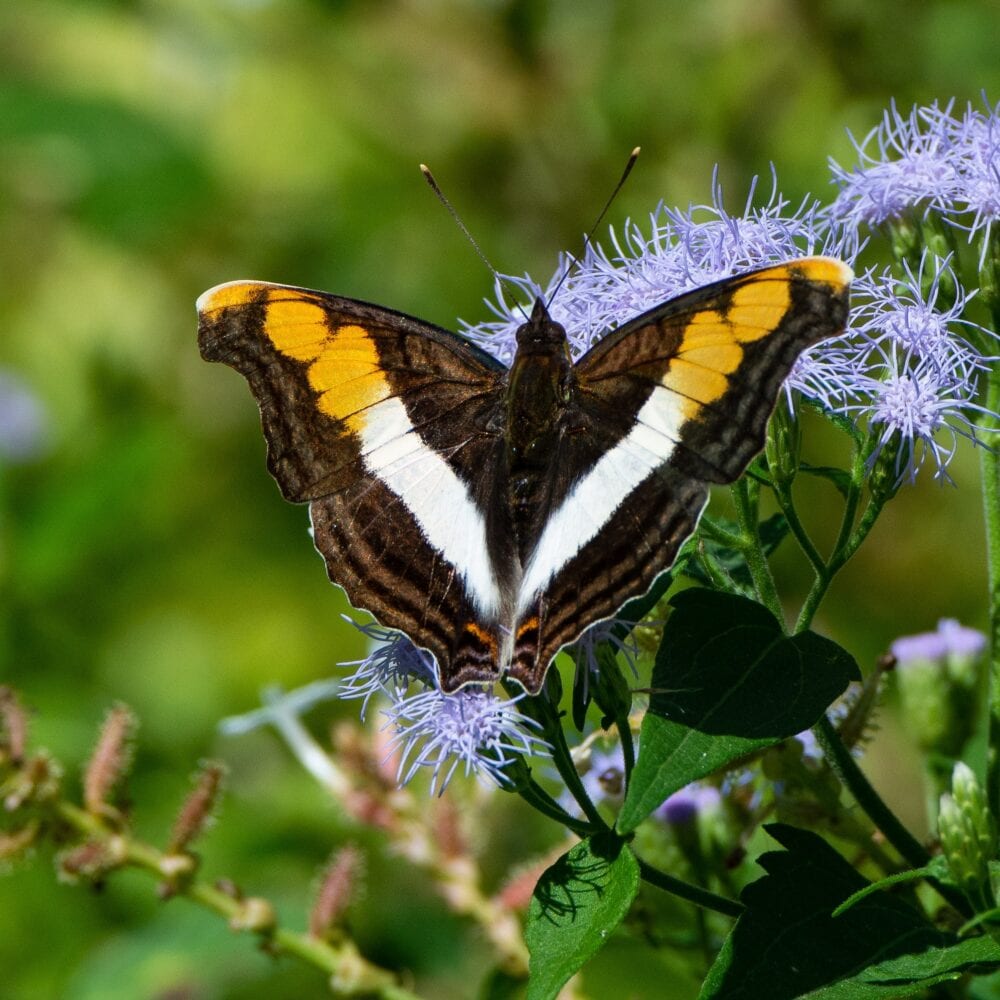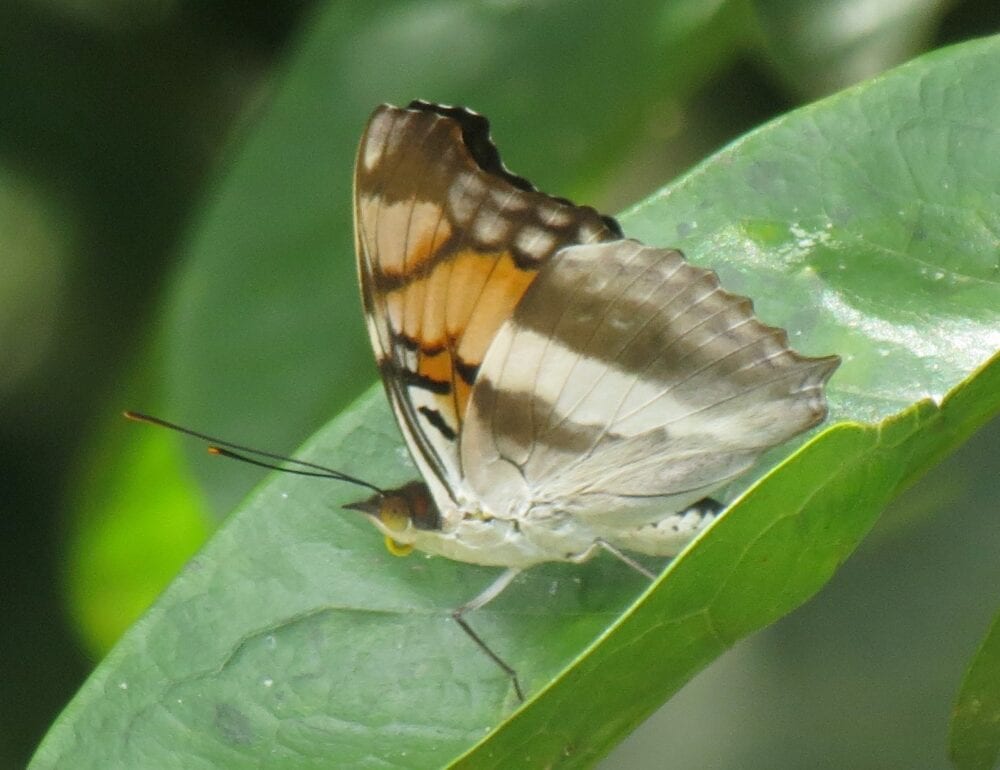by Steven J. Cary and Michael E. Toliver
The Brushfoots (Nymphalidae). This family is our second richest in terms of number of species and perhaps the most variable in terms of sizes, colors, patterns and behaviors. Despite the obvious differences in wing morphology, almost all members share a unifying structural character: on adults, the forelegs are reduced to tiny, brush-like structures, leaving only four functional legs. The exception that proves the rule is female Libytheinae, which have functional forelegs, emphasizing their ancestral status. Many of our most familiar butterflies are members of this family. Pursuant to Pelham’s (2023) catalog, we have ~100 species in ten subfamilies distributed as shown below. Other works may arrange, lump, or divide families in other ways. Updated June 26, 2023
The Emperors (Nymphalidae: Apaturinae). New Mexico is home to four species of Apaturinae. Adults resemble Vanessa species in their size, shape, wing colors and in their agile flight. Unlike the Ladies, they rarely wander far from stands of the larval host, about which they can be quite territorial. The various Emperor larvae eat plants in the Elm Family, Ulmaceae.
- Hackberry Emperor (Asterocampa celtis antonia) Asterocampa celtis montis
- Empress Leilia (Asterocampa leilia)
- Tawny Emperor (Asterocampa clyton texana)
- Drury’s Silver Emperor (Doxocopa druryi acca) Silver Emperor, Doxocopa laure
Asterocampa celtis (Boisduval & Le Conte [1835]) Hackberry Emperor (updated August 15, 2023)
Description. Hackberry Emperor has bold submarginal eyespots on all wings; hindwing undersides have eyespots with blue pupils. The forewing has one dark cell-end bar and two separate mid-cell spots on an orange/tawny background (leilia and clyton have two complete cell bars). Range and Habitat. The Hackberry Emperor of eastern North America occurs westward across the Great Plains to the southwest US and Mexico. In New Mexico, Hackberry Emperor inhabits Upper Sonoran Zone canyons with stands of the host trees (counties: Be,Ca,Ch,Co,Cu,DB,DA,Ed,Gr,Gu,Ha,Hi,Le,Li,LA,Lu,Mo,Ot,Qu,Ro,SM,Sv,SF,Si,So,Un,Va), usually 3500 to 6600′ elevation. Life History. Larvae prefer to eat netleaf hackberry (Celtis reticulata), but desert hackberry (Celtis pallida) suffices in a pinch. Larvae hibernate half-grown. Flight. The first brood flies May to June; this may be the only flight in northeast New Mexico. In southern New Mexico, numbers from July to September suggest one extended or two overlapping generations. Our records fall between May 4 and October 12. Males patrol gullies and perch head-down on canyon walls and trees. Females stay near host trees. Adults eat tree sap and rarely go to flowers. Comments. Pale Asterocampa celtis antonia (W. H. Edwards [1878]) is our subspecies. Populations that occupy our southern and central mountains and foothills were historically attributed to subspecies Asterocampa celtis montis (W. H. Edwards 1883), but that name was synonymized under antonia by Friedlander (1987).
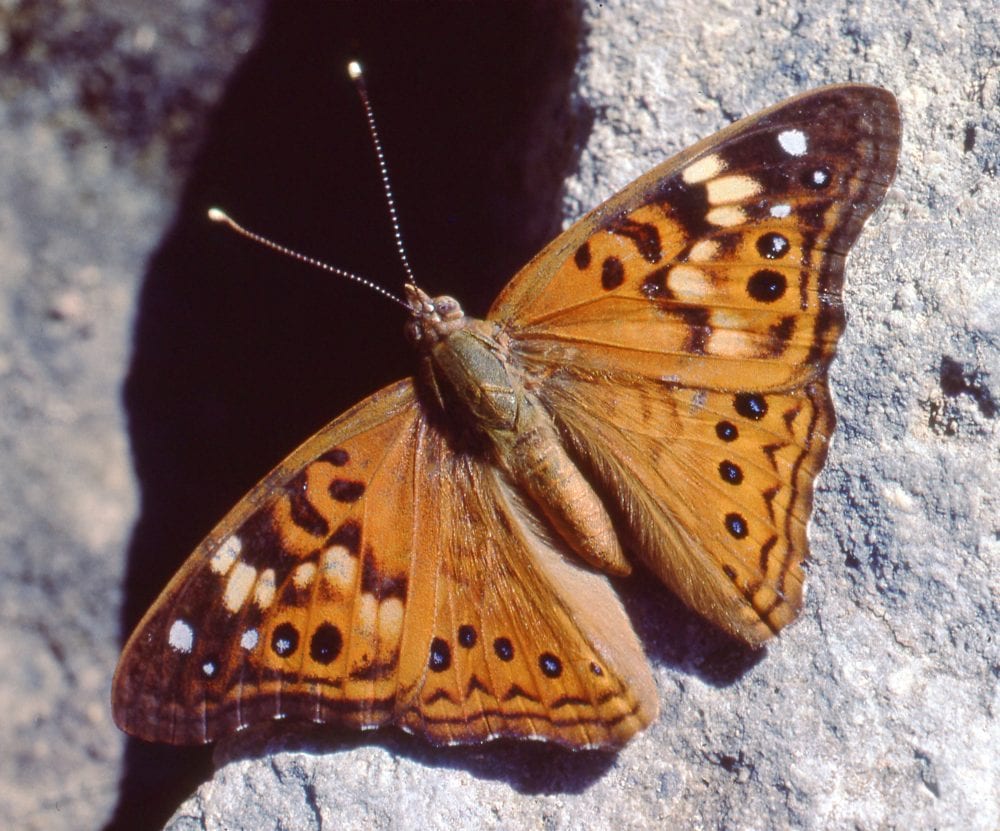
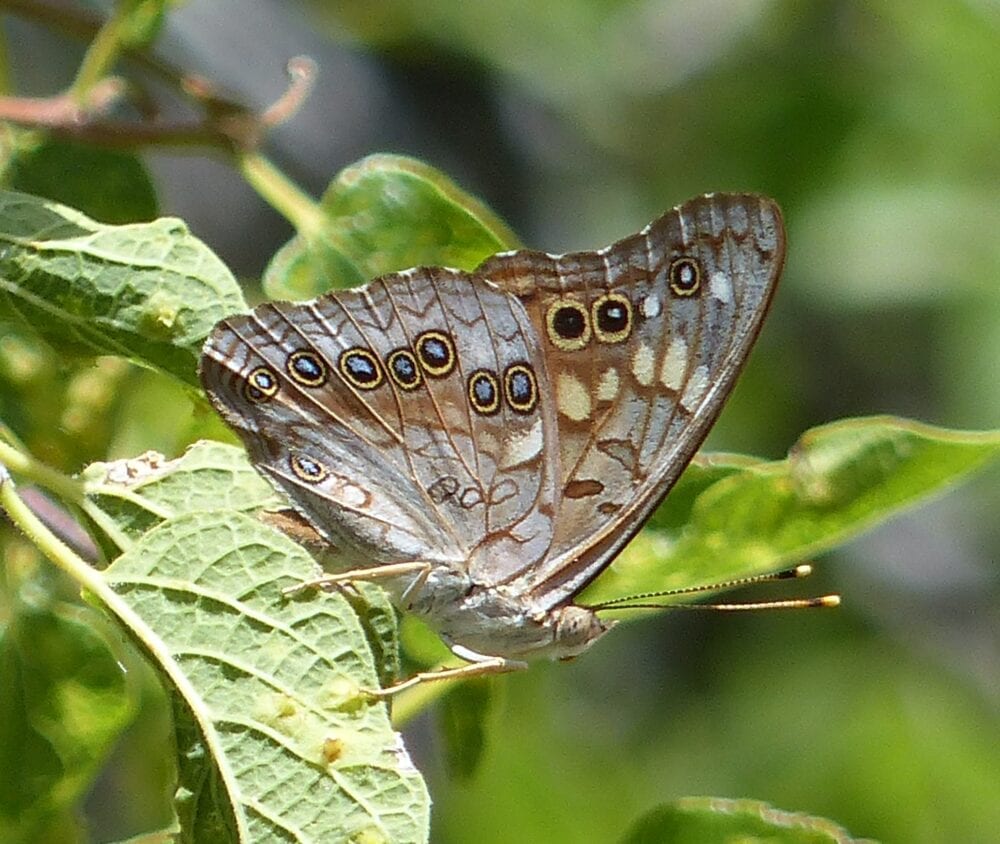
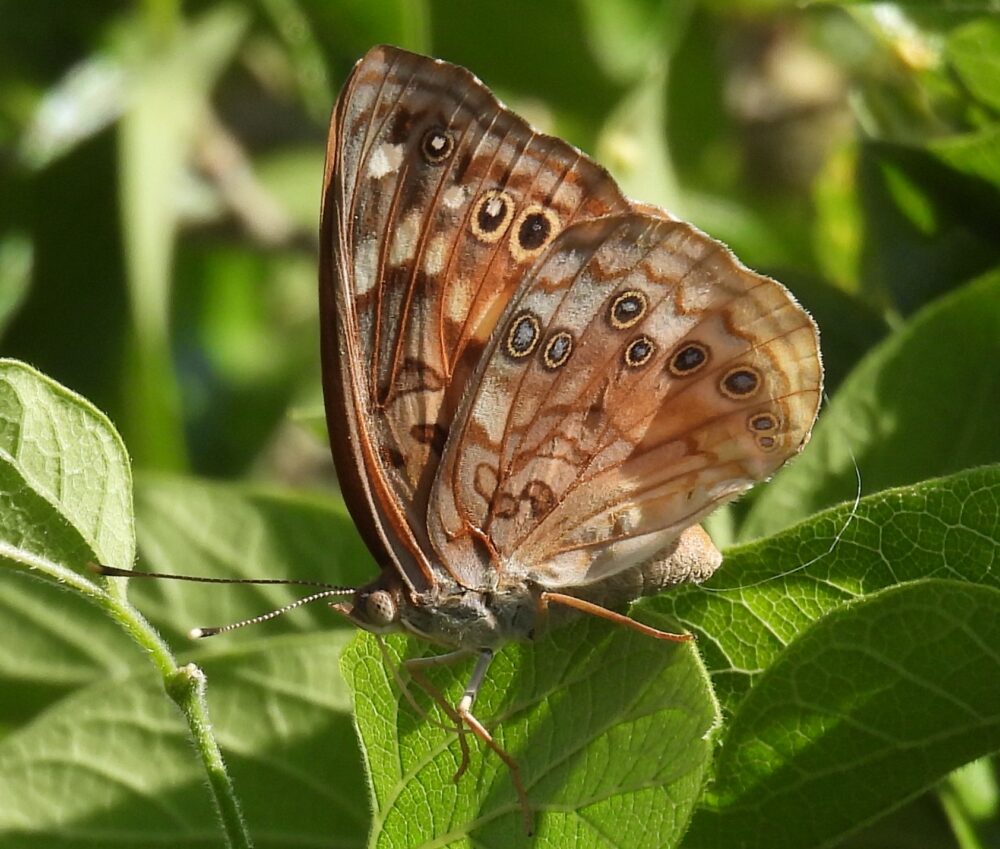
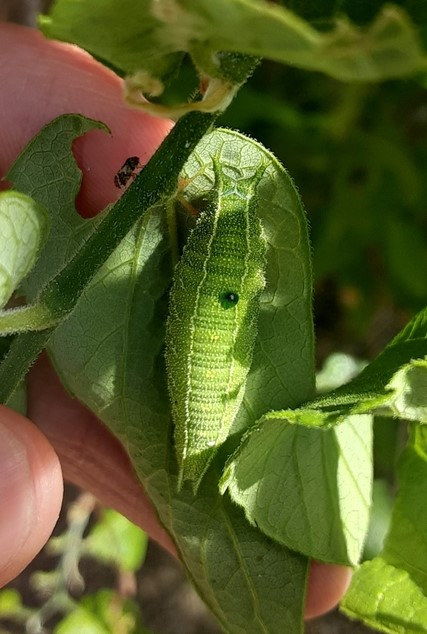
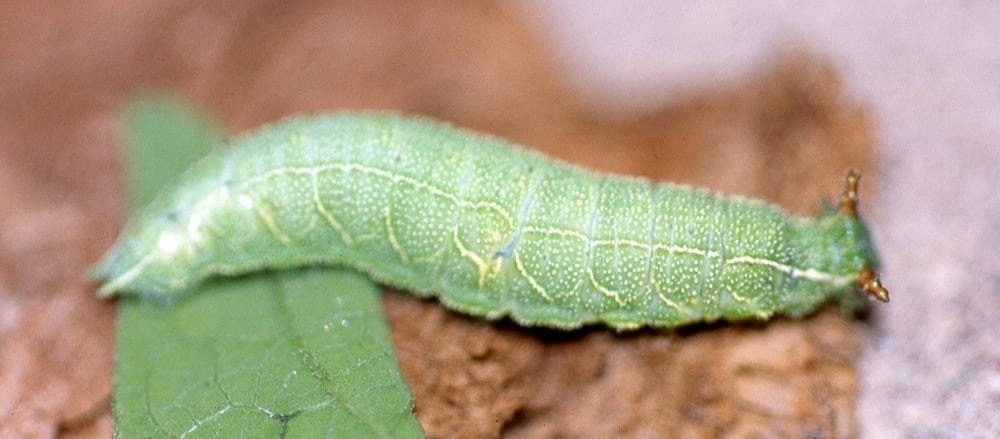
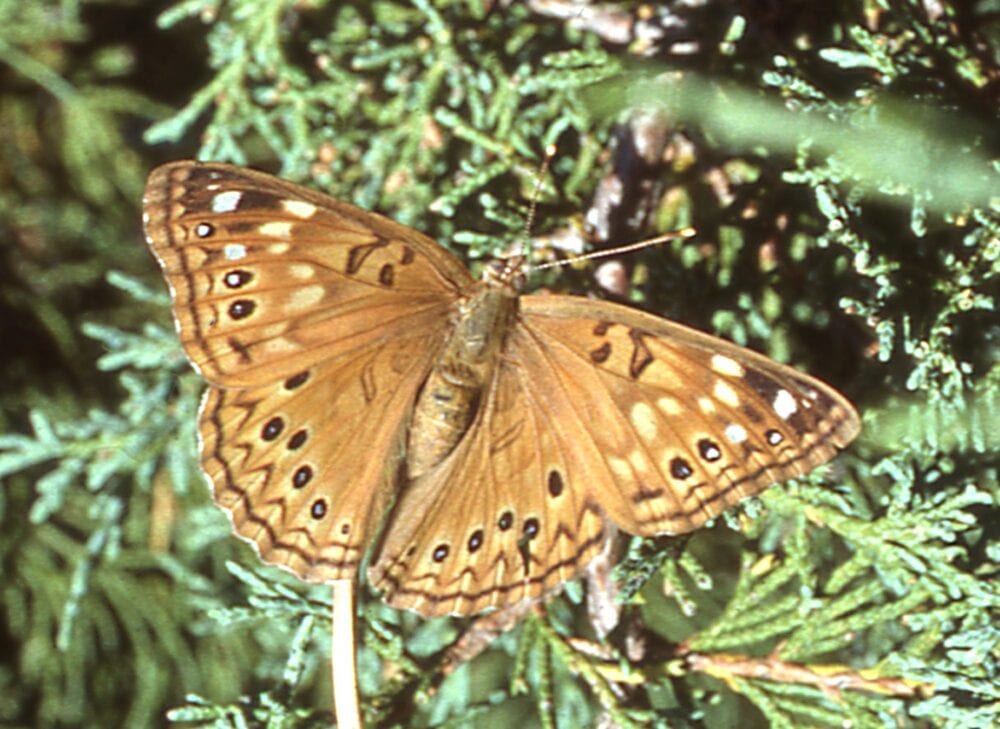

Asterocampa leilia (W. H. Edwards 1874) Empress Leilia (updated August 17, 2023)
Description. Compared to the very similar Hackberry Emperor, Empress Leilia is more slender and more compact. Black eyespots on the dorsal forewing usually lack white pupils. The forewing cell has a cell-end dark bar and a series of three white spots; the two mid-cell dark spots that are distinct in Asterocampa celtis are fused in Asterocampa leilia. Range and Habitat. Leilia is a Mexican butterfly whose range extends into southern Arizona, southern New Mexico and south Texas. In our state it breeds in desert canyons supporting the larval host (counties: Gr,Hi,Lu), usually below 5500′ elevation and south of I-10. Life History. Larvae eat Celtis pallida, the Desert Hackberry. Flight. Asterocampa leilia is bivoltine. The first flight is May to June; the second is September to October. Early and late dates are April 21 and November 29. Males perch on the ground near hackberries, then dart after passing butterflies. Adults rarely visit nectar or wet soil. Comments. Michael E. Toliver found the first New Mexico Asterocampa leilia along US 80 in the Peloncillo Mountains (Hi), on 29 August 1970.
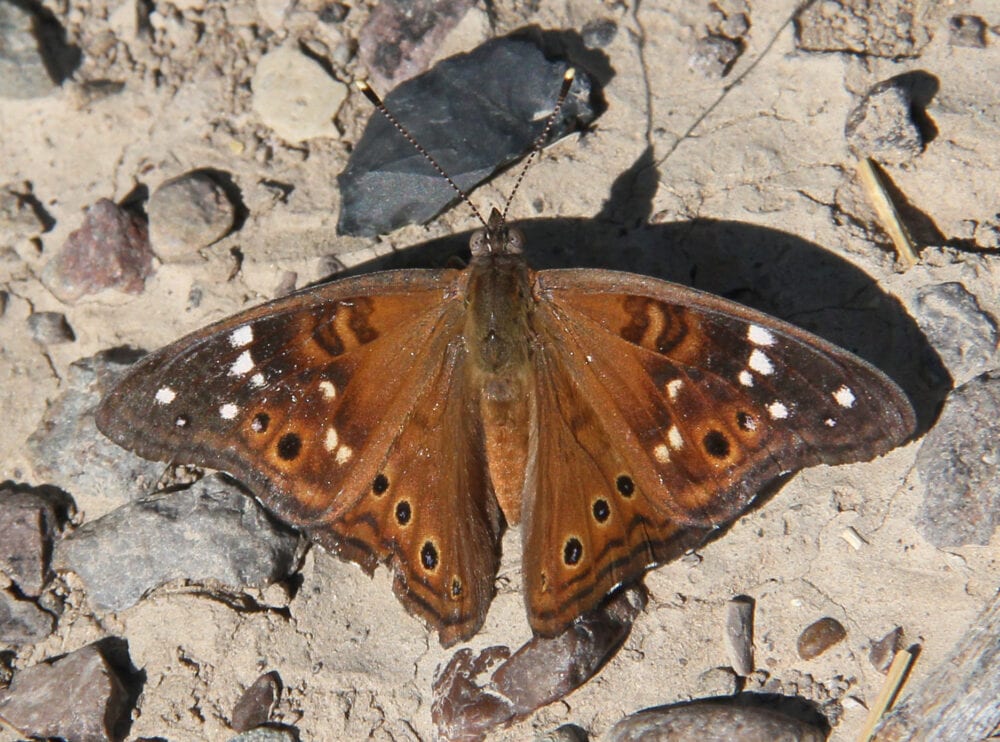
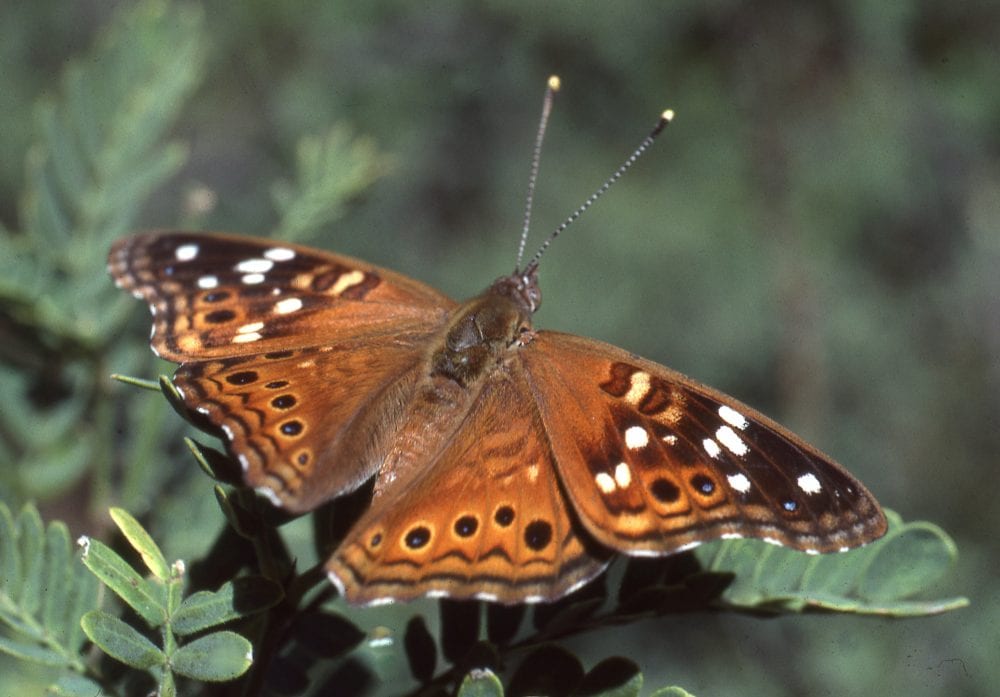
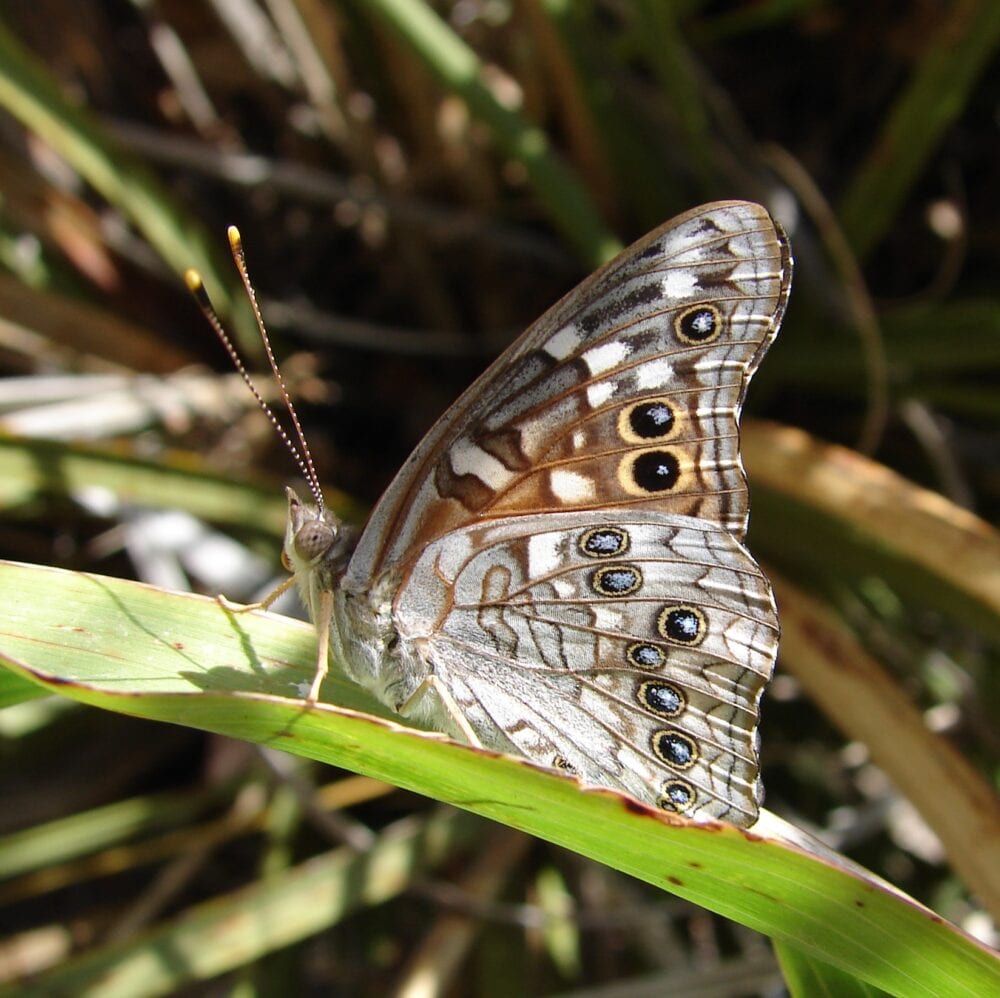
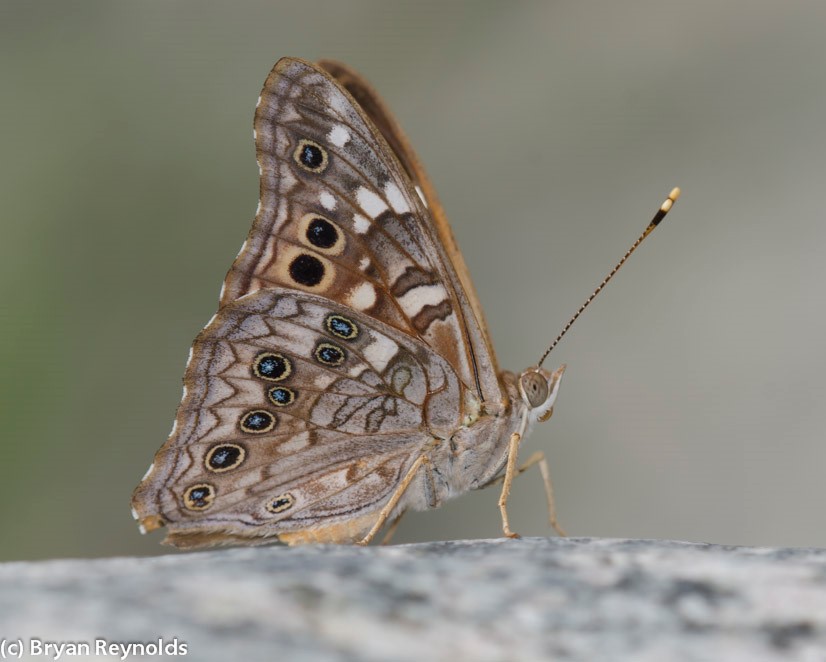

Asterocampa clyton (Boisduval & LeConte [1835]) Tawny Emperor (updated August 20, 2024)
Description. Wing markings typical of the two preceding species are smeared and faded on Asterocampa clyton. The absence of forewing ocelli gives it a banded appearance; hindwing eyespots tend to blur into the ground color. Range and Habitat. Tawny Emperor is a breeding resident in Mexico, in temperate eastern North America, and in Lower Sonoran Zone riparian habitats in the southwestern US. In New Mexico it is restricted to desert oases below 5000′ elevation (counties: Ed,Gr,Le,Lu,Hi,Ro). Life History. Tawny Emperors share some of the same larval hosts as Hackberry Emperors, including Celtis reticulata (Ulmaceae) in New Mexico. Half-grown larvae overwinter in hibernacula of leaves which they silk together. Flight. Flight records suggest at least two annual broods. The first generation flies July to August, the second in September and October. All our records fall between June 7 and October 14. Adults perch high in trees and feed on tree sap, sometimes in small groups alongside other Emperors. Comments. We have subspecies Asterocampa clyton texana (Skinner 1911).
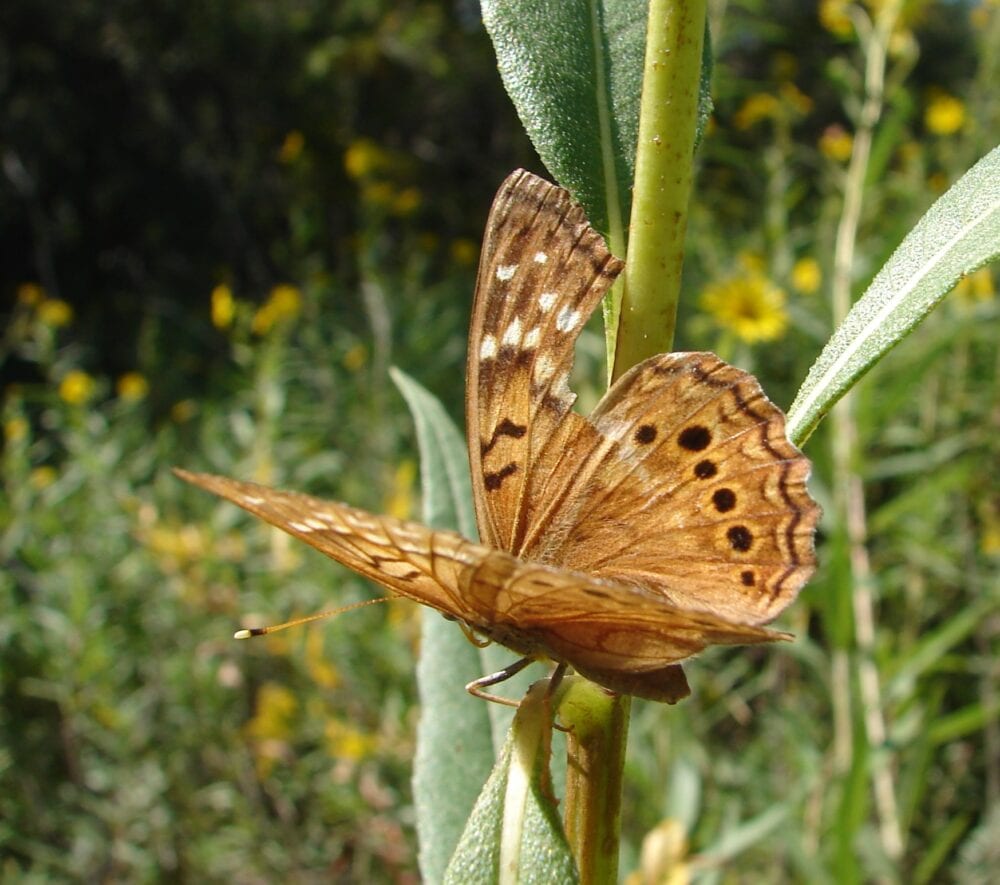
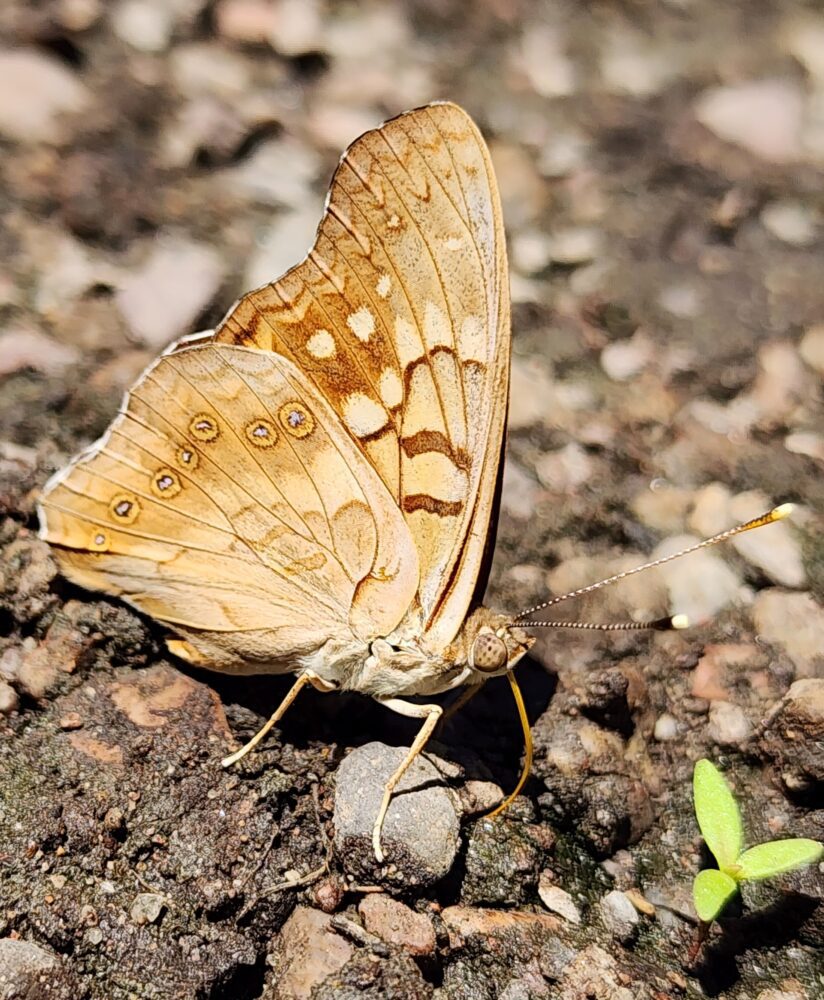
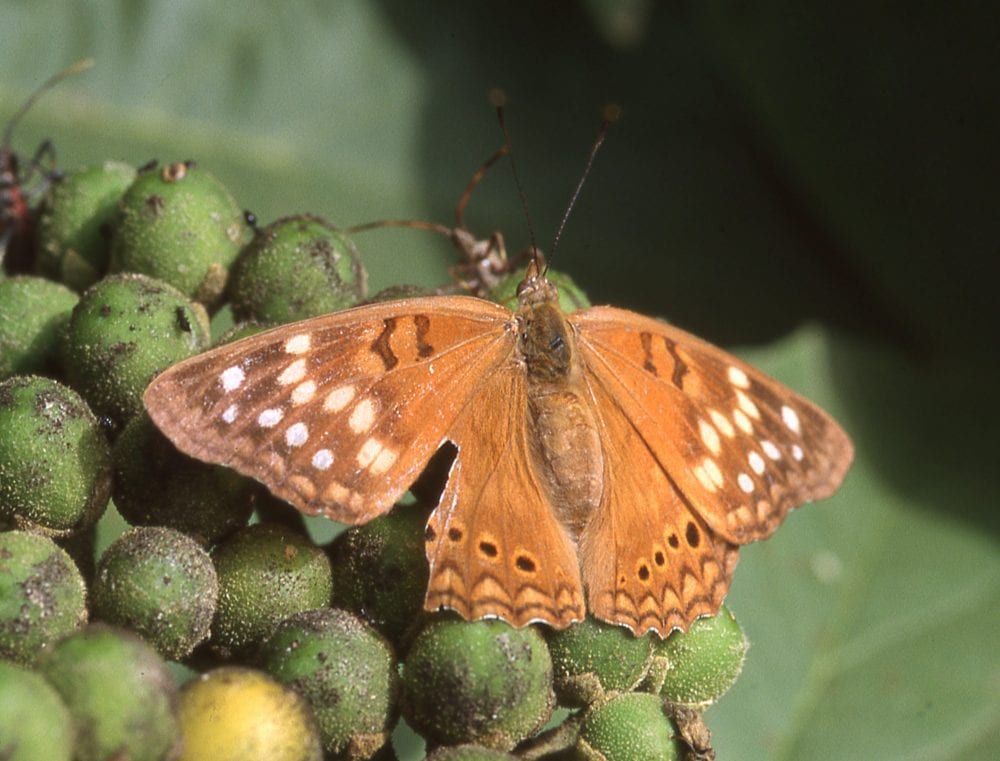
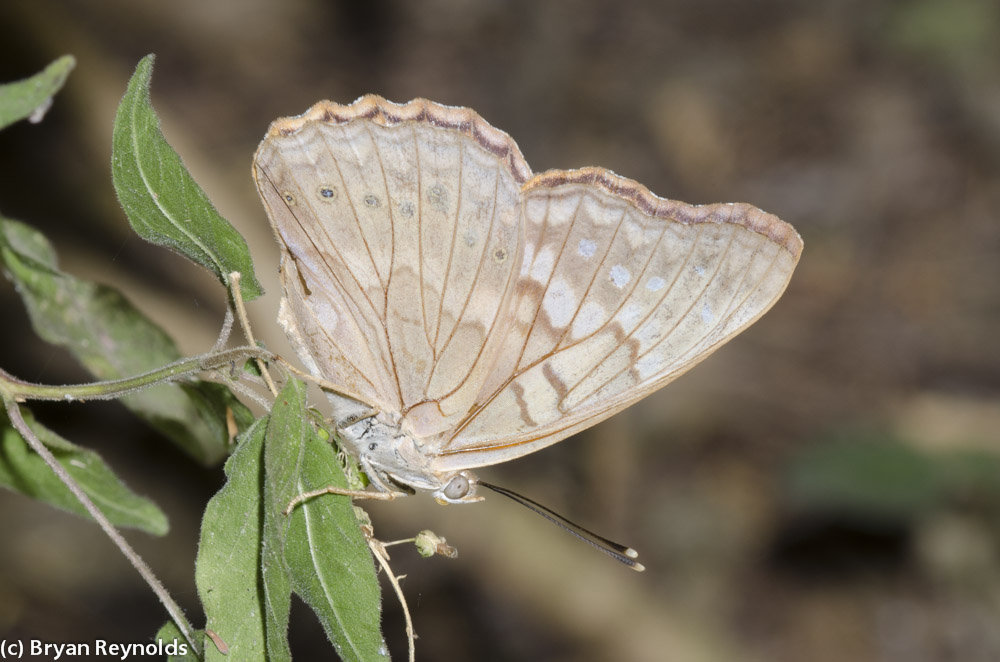
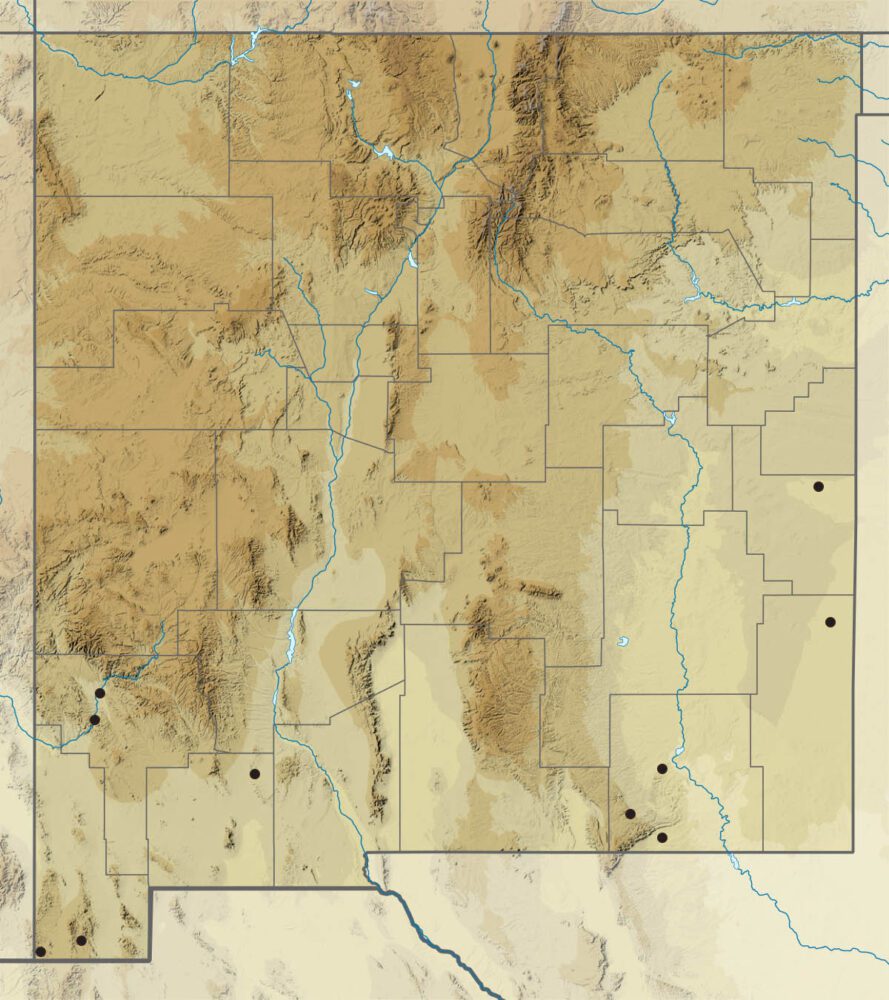
Doxocopa druryi (Hübner [1825]) Drury’s Silver Emperor (updated August 17, 2023)
Description. Drury’s Silver Emperors are like the Asterocampa species in size and shape. The dark upperside is crossed by a bold band that is white on the HW grading to yellow-orange toward the FW apex – rather like a California Sister. Undersides are overscaled with silver-white, which washes out the white band. Range and Habitat. This subtropical butterfly breeds year-round in Central America and coastal Mexico. It strays rarely in late summer and autumn to southern Texas, Arizona and New Mexico. Life history. Larvae eat Ulmaceae, including desert hackberry (Celtis pallida) in Mexico, but there is no sign of reproduction in the US. Flight. Drury’s Silver Emperors fly in July – December in S. TX; year-round in the tropics. Comments. A fresh male Doxocopa druryi was photographed and captured in Rodeo (county: Hi) on 5 October 2003 at the home of Joyce Schatz. This is our only documented New Mexico occurrence. This species was previously known as the Silver Emperor, Doxocopa laure (Drury, 1773), but R. de la Maza-Elvira & J. de la Maza-Elvira (2022) determined that druryi is a species distinct from laure and laure does not occur in the US. The version of Drury’s Silver Emperor which strays to the American Southwest is subspecies D. druryi acca (C. Felder & R. Felder 1867).
